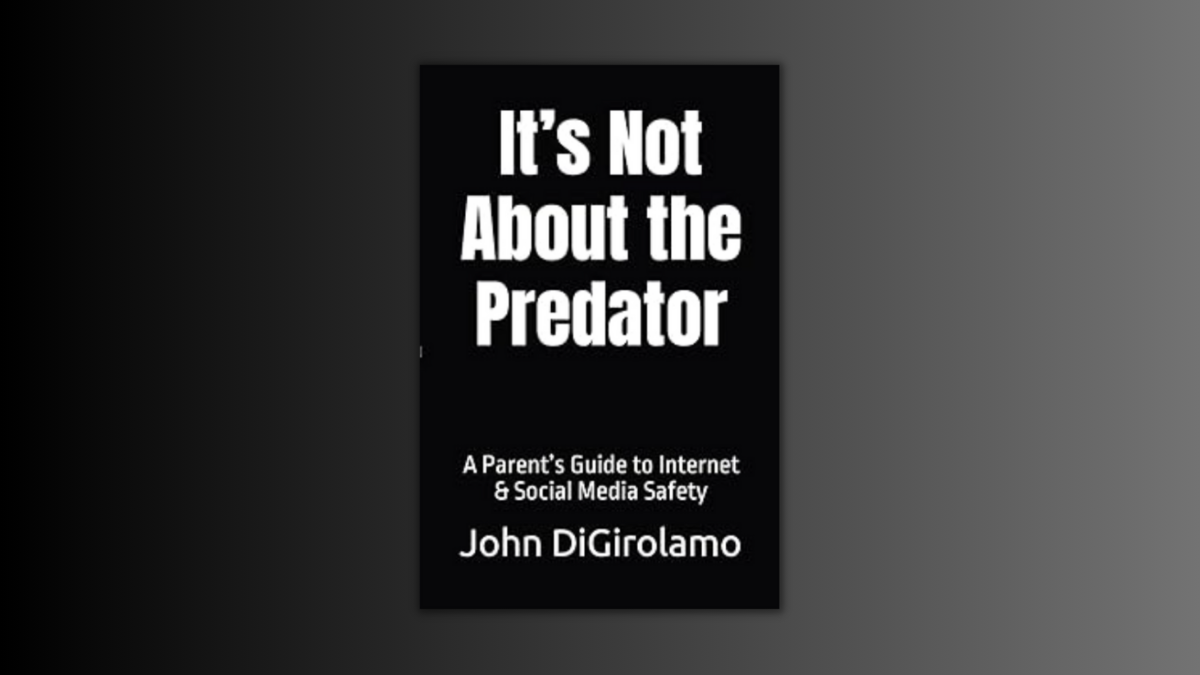“They are everywhere. And they are everywhere online. Your child — no matter where they are, if they have any access to anything internet-based — they are potentially targeted by predators,” said John DiGirolamo, speaker, anti-human-trafficking advocate and author of “It’s Not About the Predator: A Parent’s Guide to Internet and Social Media Safety.”
In “It’s Not About the Predator,” DiGirolamo shares very straightforward information about keeping vulnerable populations like children, teens or the elderly safe.
“I like to tell people that you can be making dinner at home, in the kitchen, and your child is sitting there at the kitchen table, and the predator’s in their pocket, which is how one officer described it to me. A dangerous predator could be targeting their child right in front of them. Anything can be happening if that phone is connected to the internet,” DiGirolamo said.

Obvious places
Social media sites like TikTok, Snapchat, Twitch and Discord are obvious places where an adult can connect inappropriately with children. However, even parents who are very proactive in making sure their children don’t visit dating or unsuitable websites can easily miss ways these predators operate.
One woman shared with DiGirolamo how a Fitbit was the vehicle for contact. A predator posted workouts online, which opened the door to chatting with her 15-year-old daughter. Other “innocent” sites include online games such as Minecraft or Fortnite.
“It’s not a matter of ‘if;’ it’s only a matter of ‘when,’” DiGirolamo said.
Workarounds
Even when parents diligently monitor what their children do online, one problem with having that feeling of safety is how easily it is for teens to find workarounds. In the past, if children wanted to do something outside of their parents’ consent, they had to be creative.
Times have changed.
“It’s really easy for kids to figure that out,” DiGirolamo said. “Go to YouTube and type in ‘What do you do if you have strict parents?’ You’ll find thousands of teenagers who made YouTube videos telling other teenagers how to circumvent parental controls.
“Today’s young people are like no other generation. They have literally grown up with the internet. Online friends are equivalent to those they see in real life. They have goals of having thousands of friends and followers on their sites.”
Meanwhile, predators are chameleons and will often set up profiles that match your child’s interests. When your child has that many online “friends” it can be easy for someone to sneak in under a false identity.
“It’s Not About the Predator” lists in detail what to look for in how predators work, as well as specific techniques to assist in identifying them before it’s too late.
Advice for parents
DiGirolamo has one overall piece of advice.
“You, as the parent, should be controlling any application that’s downloaded on your kid’s phone. You can do that through parental control apps.
“The second most important thing is to monitor what’s going on with their Snapchat stories or text messages they’re getting from friends or enemies or ‘frenemies’ from their school.
“The third thing is just to have that awkward conversation with your child about why you’re concerned and the dangers that are out there. It’s always been difficult to grow up, but what’s happening is we’re seeing cyberbullying at the middle school level. Don’t wait. Start early talking to them.”
DiGirolamo also brought up a common misconception that only girls are victimized.
“If you have a son, you still have to be just as diligent,” he said.
Elderly
DiGirolamo included a bonus chapter about scams against the elderly. Just the opposite of the teens who live online, the elderly often aren’t very tech savvy, which makes them just as vulnerable. He included common cons and recommendations of what to do about each.
Before “It’s Not About the Predator,” DiGirolamo wrote “It’s Not About the Sex: True Stories of Human Trafficking from a Law Enforcement Officer, a Survivor, a Brothel Madam and an Advocate,” which is an eye-opening resource for those who need to hear behind-the-scenes accounts of this horrible crime.
Though written in a story format, all portrayals are based on what actually happened to the four individuals highlighted, whose names are Ronald, Jessica, Jenelle and Angela.
Ronald is in a law enforcement task force that deals with human trafficking. His accounts are focused on what the criminals are doing and ways they lure others — both male and female — into this life.
Jessica was on the other side as an escort, porn star and brothel madam. She explains how she arrived at this lifestyle and what it took to get out of it.
Jenelle is an advocate who mostly works with young teens who need immediate help. She shares about how some of those she helped had been recruited, such as through a gaming device or while still in high school and living at home.
Angela is a human trafficking survivor. Her story depicts what happened to her but focuses on her healing and learning how to forgive.
“Although most people who read the book haven’t been trafficked, I think anybody who’s gone through a difficult time and needed healing, needed to forgive someone in their family, would resonate with that story.”
To learn more about DiGirolamo’s anti-trafficking efforts and his books, go to itisnotabout.com.






Share with others: